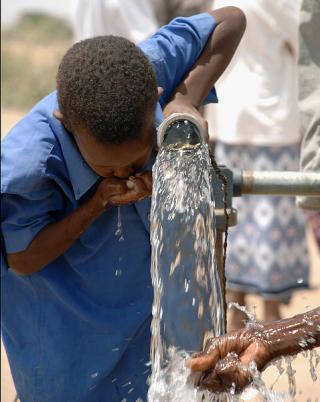
The AMA has today joined the World Medical Association and leading health organisations and associations from around the world as co-signatories of a letter to United Nations Secretary-General, Ban Ki-moon, calling for enhanced UN leadership to deliver water and sanitation ‘to everyone, everywhere by 2030’.
The health leaders are urging the UN to renegotiate its Millennium Development Goal (MDG) for sanitation to ensure more people have easy access to safe water and sanitation, and improved hygiene.
The MDG sanitation goal, which currently aims to halve the proportion of the world population without sustainable access to basic sanitation by the end of 2015, is unlikely to be met.
AMA Vice President, Dr Stephen Parnis, said that 2.5 billion people globally – around one in three of the world’s population – do not have access to a safe and clean toilet.
“Access to basic sanitation is fundamental to human health, yet inadequate sanitation continues to leave billions around the world prone to illness, poverty and death,” Dr Parnis said.
“Each year, around four million people die from diseases linked to a lack of safe drinking water, inadequate sanitation, or poor hygiene.
“At any one time, more than half the hospital beds in the developing world are occupied by patients suffering from diarrhoea.
“Diarrhoeal diseases are a leading cause of sickness and death among children in developing countries, with approximately 4,000 children dying every day from preventable diarrhoea linked to inadequate water, sanitation and hygiene.”
Dr Parnis said that poor sanitation has particular implications for women and girls.
“Having no home toilet means that women and girls in some countries must relieve themselves in open fields and public areas, which exposes them to an increased risk of assault,” Dr Parnis said.
“And the failure to provide safe female sanitation in schools contributes to lower educational attendance for girls.
“Where toilets do exist, access is often unequal and inadequate for populations with special needs, such as the disabled and elderly, and for women and girls requiring facilities to manage menstrual hygiene.”
Dr Parnis said that the Asia Pacific is one of the worst-performing regions globally in terms of people’s access to sanitation and hygiene.
“Papua New Guinea has one of the lowest rates of access to safe and clean toilets of anywhere in the world, with just one in five people having access to improved sanitation.
“Dramatic improvements must be made to water, sanitation, and hygiene access if we are to sustainably raise living standards and build prosperity in our region.
“There are also many Australians who suffer from poor sanitation.
“The Productivity Commission report, Overcoming Indigenous Disadvantage 2014, released today, shows that a considerable number of Indigenous communities lack proper access to clean water and functioning sewerage services.
“Real improvements will only be achieved if water, sanitation, and hygiene reach the countries, communities, and individuals that need them most,” Dr Parnis said.
19 November 2014
CONTACT: John Flannery 02 6270 5477 / 0419 494 761
Odette Visser 02 6270 5412 / 0407 726 905
Follow the AMA Media on Twitter: http://twitter.com/ama_media
Follow the AMA President on Twitter: http://twitter.com/amapresident
Follow Australian Medicine on Twitter: https://twitter.com/amaausmed
Like the AMA on Facebook https://www.facebook.com/AustralianMedicalAssociation
Image by BotMultichillT on Wikimedia Commons
